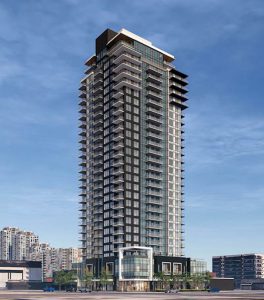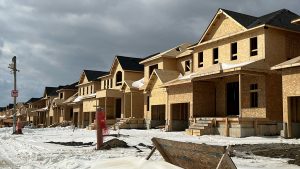Canadian office vacancies ended the year at 18.3 per cent from commercial real estate and investment firm CBRE. Combined with the urgent need to create more housing, particularly at affordable levels, the concept of office-to-residential conversion continues to create interest.
There are widespread concerning high levels of office building vacancies. Downtown commercial neighbourhoods are losing foot traffic as work-at-home hybrids persist after the COVID-19 pandemic. That can mean lower tax revenues and higher crime rates. Empty buildings are at risk of becoming “stranded assets.”
While office-to-residential conversions sound promising, successful achievement remains elusive across Canada.
On the bright side, Calgary leads all major Canadian cities in terms of policy and funding initiatives to make conversions happen.
Mayor Jyoti Gondek told the city had approved 13 projects with four more in process. In total, these will create 23,000 housing units. The first conversion project will open this year, with 40 per cent of units renting at 20 per cent below market.
The city’s downtown development incentive program has offered $75 per square foot to building owners willing to convert underused office space into residential apartments. It has proven so popular, new applications have been put on pause pending new funding.
While cities in Canada and across North America look to Calgary as a model of success, developers in other major Canadian centres face obstacles.
“Politicians and politics have put us in a position where too often we were creating barriers and obstructions to more housing and making it difficult for us to deliver,” Toronto City Coun. Brad Bradford, chair of the city’s planning and housing committee, attending a recent Urban Land Institute Toronto webinar.

The number of commercial office buildings with bonafide conversion potential has also been the subject wide ranging estimates.
For example, investigations of properties across North America by global architecture, design and planning firm Gensler a feasibility potential in 25 per cent of buildings they studied. Real estate services firm Avison Young 34 per cent of office buildings in 14 major North American markets are potential candidates for conversion.
In August 2023, a published the by National Bureau of Economic Research (NBER) presented a precise set of criteria to identify commercial office properties that are physically suitable for conversion to residential units. Until then, a consistent formula that accurately measures the convertibility potential across the broad spectrum of North American office properties had not been available.
The conclusion reached by authors Arpit Gupta, Candy Martinez and Stijn Van Nieuwerburgh is that only 11 per cent of office buildings in the United States are suitable. Canadian results are likely similar.
“We find that about 15 per cent of office buildings in the commercial districts of the 105 largest cities in the U.S. are physically suitable for conversion. Removing properties that still have a substantial share of long-term tenants in place reduces this fraction to 13 per cent, and removing relatively clean buildings leaves us with 11 per cent of properties.”
The disparity between the NBER study and other estimates could be explained by convertibility factors driven by several physical issues identified by the study’s authors.
For example, buildings built prior to 1990 with narrow floor plates allow more light to flow deeper inside than do newer glass and steel structures with massive floor plates. Older more historic buildings also tend to have lower resale values and offer more architectural charm which can improve visual attractiveness.
Overall, the NBER study emphasizes the improved conversion suitability among Class A-, B and C buildings. It also suggests buildings smaller than 25,000 square feet may lack conversion scale economies and therefore might be less attractive to institutional investors.
No matter how many structures have convertibility potential, conflicts between publicly-stated desires to create housing and bureaucratic obstacles such as zoning and historical designation restrictions must be addressed. And unless more cities join Calgary and offer tax abatements and subsidized financing programs, conversion results may continue to disappoint.
John Bleasby is a Coldwater, Ont.-based freelance writer. Send comments and Climate and Construction column ideas to editor@dailycommercialnews.com.











Recent Comments
comments for this post are closed